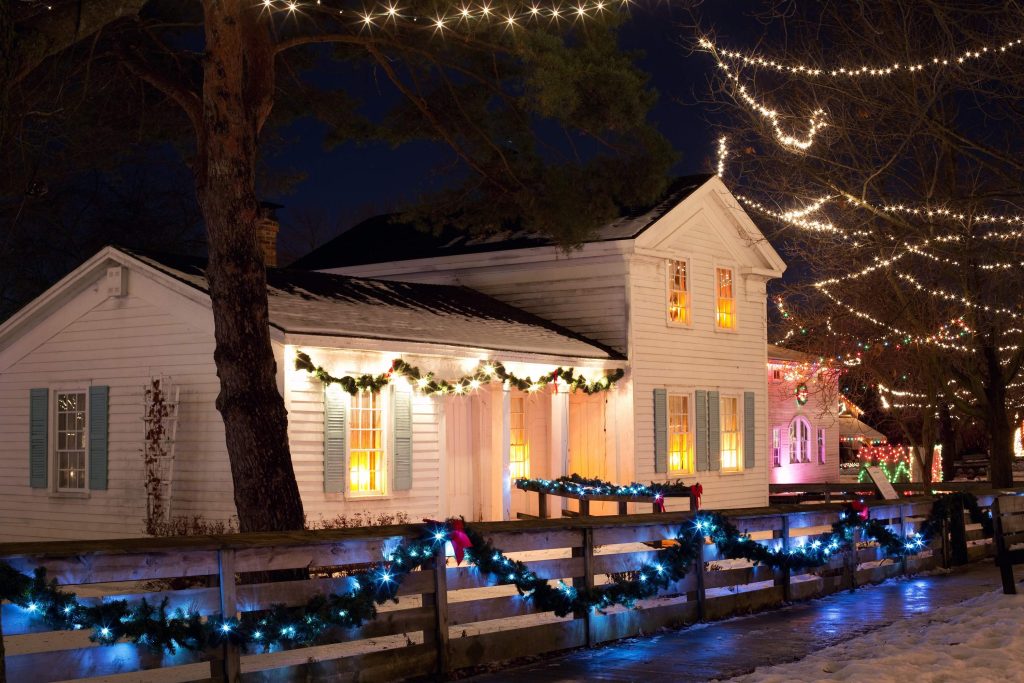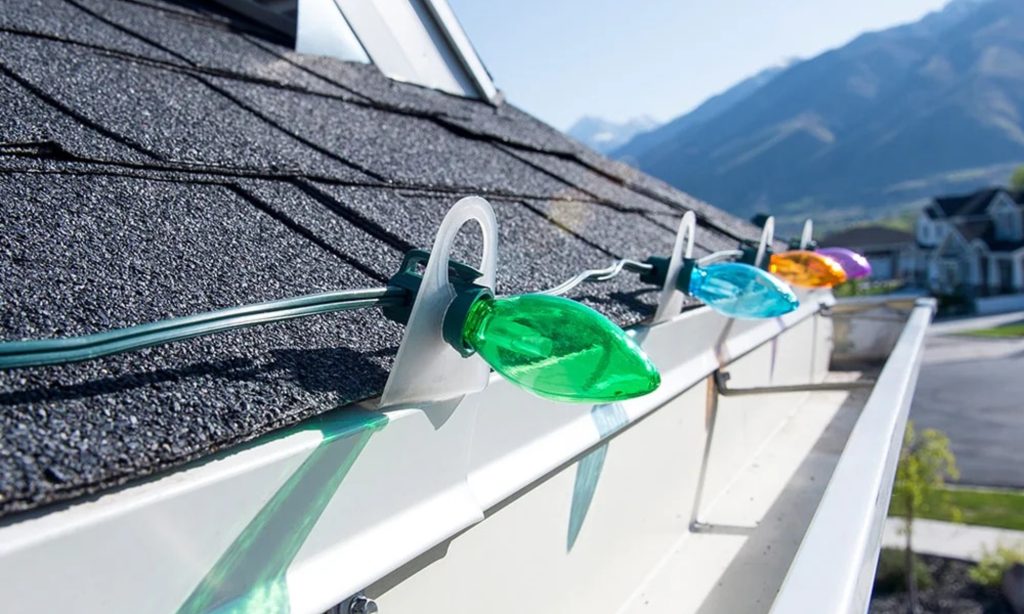The Best Ways to Hang Christmas String Lights Outdoors
Embracing the Magic: The Joy and Beauty of Outdoor Christmas Lights
The festive season is often synonymous with a spectacle of lights, twinkling like stars in the night sky. The charm of outdoor Christmas lights is an enchanting holiday tradition that transforms ordinary homes into magical wonderlands. Every year, millions around the world drape their homes, trees, and gardens with luminescent garlands of color, brightening the dark winter nights.
From simple strands of white bulbs framing windows to intricate displays depicting beloved holiday characters, outdoor Christmas lighting offers limitless opportunities for creativity and personal expression. Landscape string lights can emphasize architectural features or highlight an extensive garden’s natural beauty. They create a warm welcome for guests and bring joy to passersby.
In some communities, hanging outdoor Christmas lights sparks friendly competition as neighbors endeavor to outshine each other with ever more dazzling displays. Yet beyond these individual expressions of holiday spirit lies something deeper. The collective glow from these myriad points of light fosters a sense of unity and shared celebration that transcends boundaries.
Powering the Magic Safely: The Importance of Planning and Safety
Creating an enchanting display with landscape lighting requires more than just plugging in strings of lights and hoping for the best. Safety is paramount when working with electricity outdoors – especially in wintry weather conditions – so careful planning is crucial.
Before you begin lighting your home’s exterior, it’s important to understand how many strands your electrical circuits can handle without becoming overloaded. It’s also essential to use only outdoor-rated extension cords and outlets equipped with ground fault circuit interrupters (GFCIs) to prevent electrical shocks.
When hanging Christmas lights on roofs or tall trees, always use sturdy ladders placed on solid ground, wear non-slip footwear for better stability, and make sure another person is present in case any issues arise. Furthermore, avoid stretching or reaching too far when hanging lights to prevent accidental falls.
Choosing the correct hardware is another key safety consideration. Use light clips rather than nails or staples to secure strings of lights to your home. Clips are designed specifically for this purpose, reducing the risk of damaging the wires or the exterior of your home.
Remember that outdoor Christmas lights, while beautiful, can contribute to light pollution if not managed responsibly. Consider using timers to turn off your lights during late hours when few people are likely to see them.
Safe and responsible practices allow everyone to enjoy the magical spectacle that is a landscape adorned with glowing Christmas lights. Whether simple or extravagant, a well-planned and safely executed display will truly capture the joy and beauty of this festive season.
Preliminary Steps: Lighting the Path to Success
Choosing the Right Lights: A Spectrum of Choices
The first step towards creating a stunning display of landscape string lights is deciding on the type of bulbs that will best serve your needs. There are primarily three types of outdoor Christmas lights to choose from: LED, incandescent, and solar-powered.
LED lights are energy-efficient and have a longer lifespan compared to their incandescent counterparts. They also emit less heat, reducing the risk of overheating or fire hazards. However, they can be pricier initially but save costs in the long run due to their durability and energy efficiency.

Incandescent lights, on the other hand, are cheaper upfront and emit a warm glow many find synonymous with traditional Christmas charm. However, they consume more electricity than LEDs and have shorter lifespans.
Solar-powered Christmas lights are an environmentally friendly option for those residing in sunnier climates. They harness power from sunlight during daylight hours for use after dark, eliminating any need for an electricity source or cumbersome extension cords.
Beyond bulb type, you should understand light color temperatures as well. Warm white lights tend towards a softer yellow hue reminiscent of candles or sunset light. Cool white LEDs produce a crisp white light similar to daylight – great for modern landscapes or icicle-themed décor.
Calculating How Many Lights You Need: Number and Size Matters
Once the right type of landscape string lighting has been decided upon, it’s essential to calculate how many strands you will need for your yard or house exterior. This begins by measuring your home’s dimensions or yard space you wish to embellish with Christmas spirit.
A general rule is that you will need about 100 mini string lights per vertical foot/meter (or one strand) if wrapping trees or columns in dense coverage style.
For sparser coverage (e.g., draping over bushes or outlining structures), around 50 mini lights per foot/meter will suffice. Remember, it’s always better to have too many than too few – leftover strands can always be used elsewhere or saved for future seasons.
Gathering Necessary Tools and Safety Equipment: Ready, Set, Glow
Armed with the knowledge of the right type and amount of lights required, it’s time to gather your tools and safety equipment. This includes sturdy ladders for reaching high areas, light clips for secure attachment (a safer alternative to nails or staples), extension cords if necessary, outdoor outlets or timers for automatic on/off functionality, and replacement bulbs.

Safety should always be a priority when undertaking such tasks. Therefore, you should consider using gloves to protect your hands from any sharp objects or potential electric shocks. Non-slip shoes can provide additional grip when climbing ladders or walking on wet surfaces. It’s also worth checking the weather forecast ahead of time – ideally, choosing a dry day will not only make your task easier but also safer.
Planning Your Design
Imagination and Precision: Sketching Out Your Design
Before delving into the physical task of adorning your abode with luminary splendor, you must first craft a design plan. Paper and pencil often suffice for outlining your landscape string lights arrangement, but digital tools offer precise measurement capabilities and a broader palette for creativity. These software can also help visualize patterns and effects in the lighting design.
Focusing on Focal Points
In planning your Christmas lighting spectacle, it is essential to decide upon key focal points. These are areas that will naturally draw attention due to their prominence or unique features. Doors, windows, and trees often serve this role splendidly. Focal points function as anchors in your festive display, providing structure and balance.
A Kaleidoscope of Festivity: Considering Color Schemes and Patterns
The choice of color scheme greatly impacts the mood evoked by your landscape lighting display. Traditional Christmas colors like red, green, and white convey classic holiday cheer, while a monochrome scheme can exude elegance. Patterns further add depth to your visual narration – alternating colors or twinkling lights can produce movement that captivates viewers.
Hanging the Lights Safely and Effectively
Checking Twice for Safety: Preparing the Lights Before Hanging
Safety checks are as integral to the process as aesthetic considerations. Carefully inspect each string of lights for broken bulbs or damaged wires before installation; these could present electrical hazards when energized. Additionally, untangling strings ahead of time prevents potential damage during the hanging process.
The Starting Point: A Central Focus
Initiating your light installation from a central point such as a door or window offers numerous benefits. This approach provides an anchor for your design, allowing you to move outward methodically. It also ensures a balanced, symmetrical look to your landscape lighting.
Securing Your Twinkling Treasures: Using Clips Instead of Nails or Staples
To secure your string lights to surfaces, light clips are a preferred choice over nails or staples. They prevent damage to both the lights and the surface they’re attached to. Gutter clips and shingle tabs are two commonly utilized options that hold lights securely while being nearly invisible.
Dealing with Unexpected Issues
Dealing with unexpected issues while hanging Christmas string lights is common. Always remain patient and prepared for unforeseen complications that may arise. Whether it’s a burnt-out bulb, tangled strings, or difficulties securing lights, every problem has a solution with the right approach and tools.
Conclusion: How to Hang Outdoor Christmas String Lights?
Hanging outdoor Christmas string lights can initially seem daunting, but with careful planning, attention to safety protocols, and a dash of creativity, you can transform your landscape into an enchanting winter wonderland. The task may demand effort, but watching your design come alive as each light twinkles into action under the silent winter sky will make it all worthwhile – a testament to holiday spirit lighting up your home for all to admire.
You may also be interested in the following posts:
